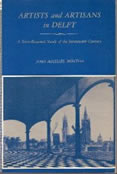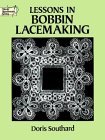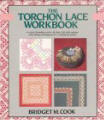By purchasing books via any of the Amazon.com or Amazon.uk links below, you will be contributing to the growth and maintenance of Essential Vermeer website, obviously, at no additional cost to your purchase.
For seventeenth-century connoisseurs, the beauty of a painting was not nearly as important as the passions that could be seen in it; these were the "soul" of the work. Fear, sadness, surprise, anger, lust and love―the full range of human emotional life can be found in works by painters such as Rembrandt, Frans Hals, Jan Steen, Maerten van Heemskerck and Cornelis van Haarlem, who were required by patrons and viewers to convincingly depict human feelings in their scenes. In Emotions, published to accompany an exhibition at the Frans Hals Museum, art historian Gary Schwartz examines this under-explored preoccupation in Dutch Golden Age art through a selection of sixteenth- and seventeenth-century history paintings, genre scenes and portraits.
This lavishly illustrated catalogue discusses the Asian luxury goods that were imported into the Netherlands during the 17th century and demonstrates the overwhelming impact these works of art had on Dutch life and art during the Golden Age. Written by a team of 30 international scholars, this volume presents seven essays and catalogue entries on 150 works of art, including Dutch and Asian paintings, textiles, ceramics, lacquer, furniture, silver, diamonds and jewelry.
From the Dutch settlements throughout Asia—including Indonesia, India, Sri Lanka, Malaysia, China and Japan—Dutch maritime traders brought an astonishing range of luxuries back to the Netherlands. Dutch consumers were enthralled with these foreign goods, which brought new colors, patterns and textures to their interiors and wardrobes. As seen in the book's many illustrations, Dutch artists also found inspiration in these objects and incorporated them into portraits, genre scenes, and particularly still-life paintings. Dutch artists and craftspeople also adapted distinctly Asian technologies, such as porcelain and lacquer, to create new works of art inspired by Asia. This catalogue weaves together the complex stories of these diverse works of art and presents fascinating portraits of the dynamic cities of Amsterdam and Batavia (Jakarta)—the Dutch trade center in Asia during the 17th century.
The Lute in the Dutch Golden Age: Musical Culture in the Netherlands ca. 1580–1670
by Jan W. J. Burgers2014
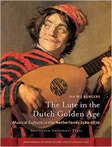
Closely associated with the social elite, the lute occupied a central place in the culture of the Dutch Golden Age. In this first comprehensive study of the instrument's role in seventeenth-century Netherlands, Jan W. J. Burgers explores how it functioned as the universal means of solo music making, group performance, and accompaniment. He showcases famous and obscure musicians; lute music in books and manuscripts; lute makers and the international lute trade; and the instrument's place in Dutch literature and art of the period.
Enhanced by beautiful illustrations, this study constitutes an important contribution to our knowledge about the lute and its Golden Age heyday.
Art and Allegiance in the Dutch Golden Age: The Ambitions of a Wealthy Widow in a Painted Chamber by Ferdinand Bol
by Margriet van Eikema Hommes2012
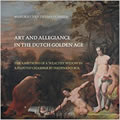
In the 1660s, Ferdinand Bol, one of Rembrandt's most famous students, painted a set of five wall-sized canvases for a wealthy Calvinist widow from Utrecht. His patron chose the themes of each painting, so that each piece reflected her own political and religious convictions. Thus Bol's work is a powerful tool for both the art and cultural historian, providing insight into the historical milieu of the seventeenth-century Netherlands. Margriet van Eikema Hommes brings this exceptional commission to life using the recent restoration of canvases to perform a "forensic" investigation, and integrating archival research, new scientific techniques for identification, and iconological analysis.
Art Market and Connoisseurship: A Closer Look at Paintings by Rembrandt, Rubens and Their Contemporaries
by Anna Tummers2009
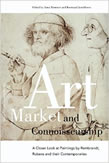
The question of whether seventeenth-century painters such as Rembrandt and Rubens were exclusively responsible for the paintings later sold under their names has caused many a heated debate. Despite the rise of scholarship on the history of the art market, much is still unknown about the ways in which paintings were produced, assessed, priced and marketed during this period, which leads to several provocative questions: did contemporary connoisseurs expect masters such as Rembrandt to paint works entirely by their own hand? Who was credited with the ability to assess paintings as genuine? The contributors to this engaging collection—Eric Jan Sluijter, Hans Van Miegroet, and Neil De Marchi, among them—trace these issues through the booming art market of the seventeenth and eighteenth centuries, arriving at fascinating and occasionally unexpected conclusions.
Maarten Prak charts the political, social, economic and cultural history of the Golden Age through chapters that range from the introduction of the tulip to the experience of immigrants and Jews in Dutch society, the paintings of Vermeer and Rembrandt, and the ideas of Spinoza. He sets the Dutch experience within a European context and examines the extent to which the Golden Age was a product of its own past or the harbinger of the more modern, industrialized and enlightened society of the future. This accessible study will prove invaluable reading to anyone interested in .
This ambitious study presents the latest views on Dutch society during the famous Golden Age. Philosophy, religion and the arts are treated at length, and particular attention is paid to the institutions and media responsible for the dissemination of culture, including language, education and the printed word. Although 1650 is the central year, the subject is examined in a much broader time-frame, which makes the book an excellent introduction to seventeenth-century society in general.
This exciting scholarly work examines Dutch maritime violence in the seventeenth century. The young Dutch Republic enjoyed a cultural and economic preeminence, and many of its seamen also took up pillaging, terrorizing their victims on the high seas and on European waterways. A story almost entirely untold until now, Piracy and Privateering in the Golden Age Netherlands presents new data and understandings of early modern piracy generally, and also sheds important new light on Dutch and European history as well, such as the history of national identity and state formation, and the history of crime and criminality.
This book examines these fascinating characteristics of Dutch art by bringing together some of the finest works from the period, including five masterpieces by Johannes Vermeer. These paintings and the scholarly essays that accompany them off glimpses into the reality of Dutch life, particularly as it unfolded in the city of Delft during the middle years of the seventeenth century.
The book accompanied an exhibition at Osaka Municipal Museum of Art from April to June 2000.
The book includes scenes that would have represented shared experiences for every citizen of Delft, but also images that were private, in that individual activities and values served as the artist's focus. Understanding and articulating their respective characteristics provides the focus of the discussions.
The world that seventeenth-century Dutch artists portrayed seems real and immediate. One can almost imagine wandering within their flat landscapes, with towns and church towers silhouetted against the Dutch sky, or participating in the tender human encounters these artists so movingly captured in their renderings of daily life. However, most Dutch paintings, while seemingly true to life, contain ideas and beliefs that remain elusive, however carefully one examines the images.
In this study of Amsterdam's Golden Age cultural elite, John Michael Montias analyzes records of auctions from the Orphan Chamber of Amsterdam through the first half of the seventeenth century, revealing a wealth of information on some 2,000 art buyers' regional origins, social and religious affiliations, wealth and aesthetic preferences. Chapters focus not only on the art dealers who bought at these auctions, but also on buyers who had special connections with individual artists.
Art and the Culture of Love in Seventeenth-Century Holland (Studies in Netherlandish Visual Culture)
by H. Rodney Nevitt Jr.2003

"[O]ne of the most valuable achievements of this book is its demonstration that this topic is as delightfully complex and problematic as any historian could desire. This book is a fascinating, subtle examination of love, youth and courtship in seventeenth-century Dutch art and a significant contribution to our understanding of this culture and its art." Erin L. Webster, Art Gallery of Ontario; University of Toronto at Scarborough, Sixteenth Century Journal "This book admirably fills a long-standing need for a critical interpretation of scenes of merry gatherings...A main strength of this study is that it considers the literary material of marriage manuals, songbooks, poetry and emblems in conjunction with close visual analysis as keys to interpretation.
Another strength is that the author emphasizes how the visual material may have been regarded and interpreted in its time...A third strength is the range of interpretations proposed, and their presentation as intentionally fluid and ambiguous." Renaissance Quarterly "Although many of the artists' names and their works are familiar to specialists, Nevitt probes their content in novel ways.... He writes with a light touch that includes humor, witty turns of phrase, and personal insight, as well as intelligence and wisdom. A splendid, original, richly rewarding book, the second contribution to Cambridge University Press's four-part series on Netherlandish Visual Culture."
— Historians of Netherlandish Art Review of Books "Rich in ideas...beautifully produced."
New insight into garden design in Northern Europe in the seventeenth century. A wealth of hitherto unknown archival documentation from the period has resulted in a step by step reconstruction of various lost domains of the Orange family.
Dutch society has enjoyed a reputation, or notoriety, for permissiveness since the sixteenth century. The Dutch Republic in the Golden Age was the only society that tolerated religious dissenters of all persuasions in early modern Europe. Paradoxically, it was committed to a strictly Calvinist public Church and also to the preservation of religious plurality. R. Po-chia Hsia and Henk van Nierop have brought together a group of leading historians from the U.K., the U.S. and the Netherlands. Their outstanding essays probe the history and myth of Dutch religious toleration.
Tin-glazed earthenware, commonly known as delftware or delft, for the town in Holland where many successful potteries operated, is composed of a buff-colored body coated with a layer of lead glaze opacified by tin ashes. From its ninth-century origins in the Near East, the tin-glazed production process spread throughout the Mediterranean during the Middle Ages, reaching France and the Low Countries in the sixteenth century. Delftware potteries came to dominate the ceramics market in the seventeenth and eighteenth centuries by frequently imitating Chinese decorative patterns.
Delftware at Historic Deerfield 1600–1800 introduces a wide range of topics pertaining to the history, manufacture, sale and consumption of tin-glazed ceramics. Lange also traces the acquisitions of delft that have built the collection at Historic Deerfield. In all, ninety-seven pieces from the museum's English, Dutch and French delftware collection are presented, all in full color, many with details and records of provenance. Chapters review the variety of delftware forms, ranging from posset pots to punch bowls, based on function rather than chronology or decoration. Suitably exacting in conception and beautiful in execution, Delftware at Historic Deerfield is a valuable resource for dealers, collectors, museum professionals, or anyone who appreciates delft. Amanda E. Lange, Associate Curator at Historic Deerfield, has served as Assistant Curator of Ceramics and Glass at the Winterthur Museum. Ms. Lange often teaches in the Cooper-Hewitt/Parsons School of Design Program in the History of Decorative Arts.
Tulipomania: The Story of the World's Most Coveted Flower and the Extraordinary Passions It Aroused
by Mike Dash2001

In the 1630s, visitors to the prosperous trading cities of the Netherlands couldn't help but notice that thousands of normally sober, hardworking Dutch citizens from every walk of life were caught up in an extraordinary frenzy of buying and selling. The object of this unprecedented speculation was the tulip, a delicate and exotic Eastern import that had bewitched horticulturists, noblemen and tavern owners alike. For almost a year rare bulbs changed hands for incredible and ever-increasing sums, until single flowers were being sold for more than the cost of a house.
Historians would come to call it tulipomania. It was the first futures market in history, and like so many of the ones that would follow, it crashed spectacularly, plunging speculators and investors into economic ruin and despair.
This is the history of the tulip, from its origins on the barren, windswept steppes of central Asia to its place of honor in the lush imperial gardens of Constantinople, to its starring moment as the most coveted—and beautiful—commodity in Europe. Historian Mike Dash vividly narrates the story of this amazing flower and the colorful cast of characters—Turkish sultans, Yugoslav soldiers, French botanists, and Dutch tavern keepers—who were centuries apart historically and worlds apart culturally, but who all had one thing in common: tulipomania.
A superb panorama of politics and war that brings together two classic volumes by Geyl: The Revolt of the Netherlands 1555–1609 and The Netherlands in the 17th Century 1609–1648. Here is the story of the Netherlanders' epic struggle against Spain's might and the rise of the Dutch Republic—as well as important and still pressing issues about the relationship between religion and political action, complex questions of national identity, and the problems of a small country struggling to survive in a great-power world.
Public and Private Spaces: Works of Art in Seventeenth-Century Dutch Houses (Studies in Netherlandish Art and Cultural History)
by J. Loughman & J.M. Montias2001

Foreign travelers in the Netherlands described the large number of paintings and works of art in the houses of the seventeenth-century citizenry. Both humble craftspeople and well-to-do regents with fashionable tastes collected paintings.
In Works of Art in Seventeenth-Century Houses, various aspects of the history of art collecting are examined using a large number of inventories. How was the art collection of citizens in the 17th century composed? How were the works of art distributed over the rooms of the houses? What significance did they have in the interior? In what way were paintings and objects of applied art presented?
The humorous side of Dutch culture of the 17th century is obscured by a change that took place around 1670. Religious treatises and books of manners warning against laughter contributed to a new image, that of the humorless Calvinist Dutch. Based on a manuscript containing some 2000 jokes, the lost laughter of the Golden Age is reconstructed and analyzed. Most jokes are crude and obscene, and they throw a new light on attitudes towards sexuality, religion and other aspects of life.
Childhood, Memory and Autobiography in Holland: From the Golden Age to Romanticism (Early Modern History)
by Rudolf Dekker1999

Between the 17th and 19th centuries, autobiographers and diarists invented new ways to write about childhood and children. At the same time, pedagogical ideas about child-rearing changed. This book looks at the connection between these developments. Childhood became more highly valued as a phase of life, and children were taken more seriously. This is shown in chapters on child's play, punishment, wet-nursing, and independence. Around 1800, in diaries, parents more openly grieved about the loss of a child, which indicated both a change of literary conventions and changes in the way emotions were felt and expressed. Finally, autobiographers wrote more and differently about their early years, and developed new memory strategies.
The Dutch Republic emerged from the epic revolt of the Netherlands against Spanish rule in the late sixteenth century and almost immediately became a major political force in Europe. In this book, Leslie Price—an acknowledged expert in the field—shows how this extraordinary new state, a republic in a Europe of monarchies, was able to achieve such successes despite the burdens of the Eighty Years War with Spain, which only came to a definitive end in 1648. The engine behind these achievements was the phenomenal growth of the Dutch economy which, within a few decades, had become the most powerful in Europe. This book offers a concise but penetrating survey of the major features of in this period, challenging previous interpretations and showing how the economic boom of the late sixteenth and early 17th centuries produced a vigorous society that was able to combine religious pluralism with relative political stability and rapid social change with a remarkable vitality.
The Dutch Republic: Its Rise, Greatness, and Fall 1477–1806 (Oxford History of Early Modern Europe)
by Jonathan Israel1998

Jonathan Israel's 1,231-page blockbuster offers a comprehensive, integrated account of the northern part of the Netherlands over almost 350 years...[it] represents the fruit of 12 years of research, contemplation and writing, and brims over with interesting detail."
—The New York Times Book Review
"Israel performs the great service of charting a path through this literature and presents a coherent and comprehensive picture of the Dutch Republic. Comprehensive in scope and yet so clearly and carefully written that it could serve as a textbook for graduate history courses. Because it is so thoroughly researched and up-to-date, it is also the kind of indispensable handbook that deserves a place on every early modernist's bookshelf."
—American Historical Review
Art and Commerce in the Dutch Golden Age: A Social History of Seventeenth-Century Netherlandish Painting
by Michael North1997

During the 17th century, the Netherlands—a small country with just two million inhabitants and virtually no natural resources—enjoyed a "Golden Age" of economic success, world power, and tremendous artistic output. In this book North examines the Dutch Golden Age, when Dutch society boasted Europe's greatest number of cities and highest literacy rate, unusually large numbers of publicly and privately owned art works, religious tolerance, and a highly structured and wide-ranging social network.
Dutch Art explores developments in art, art history, art criticism, and cultural history of the Netherlands from the artists' workshops for the Utrecht Dom in 1475 to the latest movements of the 1990s. it is lavishly illustrated with 147 black-and-white photographs and 16 pages in full color. More than 100 internationally recognized scholars, museum professionals, artists and art critics contributed signed essays to this monumental work, including historians, sociologists and literary historians.
Lavishly color-illustrated history of so-called delftware tiles from precursors in southern Europe through development in Holland to imitators in other countries. Extensive discussion of pictorial themes, architectural use of tiles, and modern successors of the 17th century classics. Includes a substantial chapter on collecting tiles and includes a list of tile museums in Europe and the US.
Focusing on the two 17th-century pioneers of microscopic discovery, the Dutchmen Jan Swammerdam and Antoni van Leeuwenhoek, the author demonstrates that their uneasiness with their social circumstances spurred their discoveries. Ruestow argues that while aspects of Dutch culture impeded serious research with the microscope, the contemporary culture shaped how Swammerdam and Leeuwenhoek responded to what they saw through the lens. For those interested in the history of science, this book considers the impact of institutionalization on microscopic research, and dissects the cultural, social and emotional circumstances that shaped early microscopic discovery.
This engagingly written study presents a rich picture of a dynamic society that had torn itself away from the mediocrity of its past—a stagnant nation of peasants and fishermen—to pursue an overseas empire that led to great financial wealth and a highly sophisticated cultivation of the arts. This classic work first appeared in English translation in 1963.
Superb guide by accomplished lacemaker enables even beginners to create beautiful lace according to age-old technique. History of bobbin lace, materials and supplies, techniques for simple braid, edgings, fans and spiders, rose ground, turning a corner, laces with gimp, laces made on a flat pillow. Projects graded, simple to advanced. 249 illustrations.
Plain Lives in a Golden Age: Popular Culture, Religion and Society in Seventeenth-Century Holland
by A. Th. van Deursen, Maarten Ultee (Translator)1991

This is an account of the ordinary working people of Holland in the 17th-century, the so-called "golden age. "Professor van Deursen is the most outstanding and gifted scholar at present working on this period of. His history 'from below' is based on a mass of contemporary documentary evidence and the text is enlivened by contemporary illustrations. Ranging over a broad spectrum of everyday conditions, sex, marriage, leisure, religion and popular culture, this is the most comprehensive study yet published of the plain lives of a "golden age'"
Of the various bobbin lace types, "torchon" lace is probably the best for a beginner to tackle. Based on a combination of attractive motifs with a geometrical ground, it uses a simple range of stitches to produce relatively speedy and gratifying results. Exercises cover: the half stitch the whole stitch diamonds spiders rose grounds Scandinavian holes and picots. The book includes 27 projects for lace, including nursery lace, fans, hearts, borders and edgings, collars, frills, coasters, squares, handkerchiefs and more. Clear, full-color photographs and color-coded diagrams are of great practical help. Beginners will welcome this book with its concise, progressive approach: experts will find a wealth of original designs to add to their repertoire.
The Embarrassment of Riches: An Interpretation of Dutch Culture in the Golden Age
by Simon Schama1988

Despite Calvinist sermons on thrift, the Dutch upper and middle classes flaunted their wealth in the consumer paradise that was 17th-century Holland but they lived uneasily with material riches. How the Dutch reconciled piety with their commitment to profits is just one of the conundrums explored in this cultural history by a Harvard professor. Netherlandic seafarers built a world empire in just two generations; the Dutch nation's precocious rise to power as presented here helps to explain their defensive patriotism, the mania of housewives for cleanliness and the ideal of the family as a miniature commonwealth. The Dutch urge to classify was evident in everything from their tulip classification system to paintings of children's games. Delving into customs, beliefs, popular art and quirks of behavior, Schama has fashioned a tour de force, a profound, unconventional and rewarding portrait of a people.
Bobbin Lace: An Illustrated Guide to Traditional and Contemorary Technqiues
by Brigita Fuhrmann1985

Comprehensive manual shows how to create every kind of bobbin lace. Step-by-step stitch instructions, clear diagrams. History, tools, drafting patterns, more. 279 illustrations.
Artists and Artisans in Delft, a Socio-Economic Study of the Seventeenth Century
by John M. Montias1981
